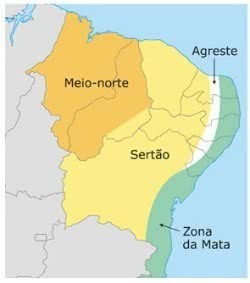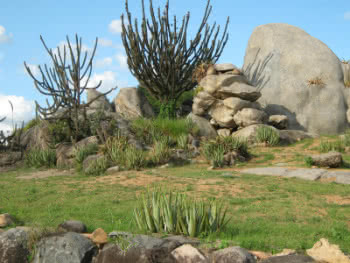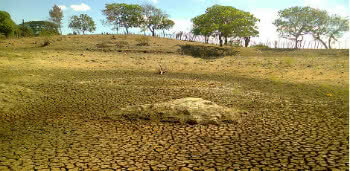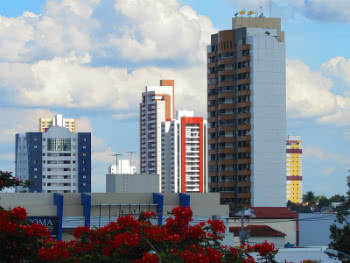O wild it is a northeastern sub-region, located between the forest zone and the sertão. In other words, it is a region that lies between the hinterland and the coast of the Northeast.
Therefore, it is called the transition zone. It is not as hot and dry as the sertão nor as humid as the forest zone.
Map and Location

Map of northeastern sub-regions: mid-north, sertão, agreste and forest zone
The agreste is a large strip that is located parallel to the coastal coast. It covers six states in Brazil: Rio Grande do Norte, Paraíba, Pernambuco, Alagoas, Sergipe and Bahia.
Relief and Vegetation
The relief of the agreste brings together regions of plateaus, with emphasis on the Borborema Plateau.
The vegetation is marked by the biome of the caatinga and presence of deciduous vegetation, which loses its leaves in some periods.
Cacti, bromeliads, some legumes and bushes with twisted branches are characteristic of the place.

Wilderness vegetation
Because it is a transition region, that is, between the forest zone (wetter) and the
backwoods (drier), there are places where the biome of Atlantic forest is present.soil and rivers
The soil is rocky and, for the most part, not very fertile, due to the lack of rainfall in the region. However, there are humid regions, such as marshes, where the soil is more fertile and agriculture is the main activity.

Dry weir in the Pernambuco region
Most of the rivers that cross the region are temporary (intermittent), that is, they dry up in some periods of the year.
Climate
The predominant climate in the northeastern agreste region is the semiarid climate. It has high temperatures all year round and irregular and sometimes scarce rainfall.
Therefore, it is a very dry region with some places with higher humidity. To the east, the climate is wetter as it is close to the Wood zone.
Economic activities
The economy of the agreste revolves around livestock and polyculture. Thus, the main economic activities are: cattle raising, milk production and the cultivation of different types of plants (corn, beans, cassava, coffee, cotton, sisal, fruits and vegetables). This is because there are some wet and marshy regions where it is possible to cultivate.
Although no capital is located in the agreste, there are very important economic and cultural centers, as the cities: Feira de Santana (BA), Caruaru (PE), Campina Grande (PB), Arapiraca (AL) and Itabaiana (IF).

Municipality of Feira de Santana (BA), the most populous in the wild
Some festivals of São João are among the biggest in the world that take place in Caruaru and Campina Grande.
Therefore, in addition to agriculture and livestock present in rural regions, in urban areas, we find many industries, commerce and various services. The region's handicrafts are worth mentioning, sold in stores and at various fairs.
Read more about the region:
- Northeast region
- Northeast States
- Northeast Region Climate
- Northeast culture
- Northeast Region Economy
- drought in the northeast
Learn more by watching:
